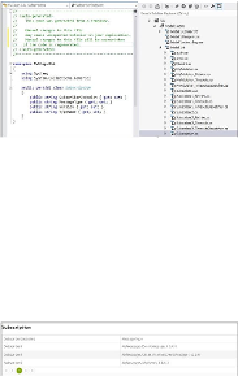Database Reference
In-Depth Information
MVCApp.DAL.Subscription
model, which is not an object that we coded, but it was
generated as the entity object to be mapped from the
.edmx
file. Here, we can see the
code of the entity objects themselves; in this case, the
MVCApp.DAL.Subscription
entity is the entity object generated from the EF. Visual Studio generates all the mapping,
including that of the entity objects on its own, such that we can use as models for both
controllers and views.
So, when the
Subscription
link is clicked, we will populate the
Subscrip-
tion.cshtml
file with a collection of the table entries, as the entity models from the
controller, to display all the entries in the browser.
In a similar manner, we can add the same for the
MyPublisher
,
Subscriber1
,
Subscriber2
,
error
, and
audit
queues to view their messages as well.
This is not a replacement for ServicePulse to get a pulse on NServiceBus, but this is an
exercise of the power that NSB has to offer, and why ESB engines, such as NSB, are so
powerful in using them. We just demonstrated through a simple program how to visually
create an administration tool to view queues. Features could be added to send e-mails
when there is a message in an error queue, to get an audit queue count of messages for
today, and many more such tracking features. This demonstrates that not only are the mes-
sage queues durable, but they can easily be tracked.
To recap MVC integration, MVC is the most common software design pattern used. In the
MVCApp
project, we have built models-views-controllers.

